 W
WThe CANT 6 was a flying boat designed for Italian military service in 1925. It was a large biplane of conventional design with three engines mounted in nacelles within the interplane gap. Only a single example was produced in its original military configuration, followed by two further aircraft redesigned as 11-seat passenger aircraft. One of these was retained by CANT, but the other entered airline service with Società Italiana Servizi Aerei.
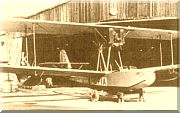 W
WThe CANT 7 was a flying boat and training aircraft that was produced in Italy in the 1920s. It was a conventional biplane design with single-bay, unstaggered wings of equal span, with the single engine mounted below the upper wing. The aircraft was designed to prepare pilots for flying boat airliners, and most of the examples produced were purchased by Società Italiana Servizi Aerei for this purpose.
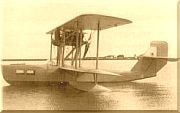 W
WThe CANT 10 was a flying boat airliner produced in Italy in the 1920s. It was a conventional biplane design with single-bay, unstaggered wings of equal span, having seating for four passengers within the hull, while the pilot sat in an open cockpit. The engine was mounted in pusher configuration in the interplane gap.
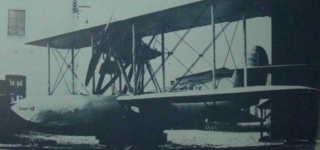 W
WThe CANT 13 was an amphibious aircraft designed for use on Regia Marina ships in response to a 1925 competition.
 W
WThe CANT 18 was a flying boat trainer developed in Italy in the 1920s to prepare pilots for flying boat airliners. A development of the CANT 7, it incorporated various aerodynamic and hydrodynamic refinements. While remaining broadly similar in configuration, the new design replaced the CANT 7's conventional struts with Warren truss bracing for the wings. Most of the aircraft produced were used by S.I.S.A..
 W
WThe CANT 21 was an Italian reconnaissance flying boat built by CANT in the late 1920s.
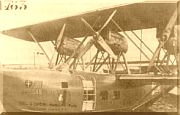 W
WThe CANT 22 was a flying boat airliner built in Italy in the 1920s and operated by Società Italiana Servizi Aerei (SISA) on their Adriatic routes. It was a conventional biplane design with unstaggered wings braced by Warren trusses. The three engines were mounted in nacelles carried in the interplane gap. Accommodation for passengers was provided within the hull, but the pilots sat in an open cockpit. Originally designed to carry eight passengers, an engine upgrade on later examples allowed the addition of two more seats.
 W
WThe CANT 23 was an Italian trimotor airliner built by CANT in the late 1920s.
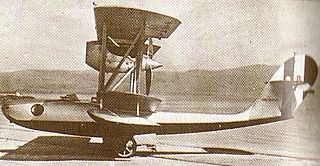 W
WThe CANT 25 was an Italian shipboard single-seat biplane flying boat fighter that entered service with the Regia Aeronautica in 1931.
 W
WThe CANT 26 was an Italian two-seat biplane trainer built by CANT.
 W
WThe CANT 36 was a trainer developed in Italy in the 1930s. It was a conventional design with fixed tailskid undercarriage and accommodation for the pilot and instructor in tandem, open cockpits. Intended for advanced training, it was equipped with a powerful 187 kW (250 hp) engine. The single prototype was evaluated by the Regia Aeronautica, but when no purchase order was forthcoming, no further examples were built.
 W
WThe CANT 37 was an Italian reconnaissance flying boat built by CANT in the early 1930s.
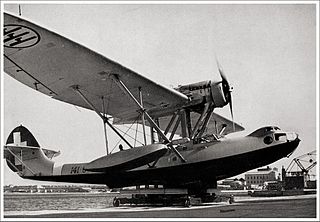 W
WThe CANT Z.501 Gabbiano was a high-wing central-hull flying boat, with two outboard floats. It was powered by a single engine installed in the middle of the main-plane and had a crew of 4–5 men. It served with the Italian Regia Aeronautica during World War II, as a reconnaissance aeroplane. During its debut in 1934, it set a world distance record. It was obsolete by 1940, but was still used throughout World War II, suffering many losses. A few remained in service until 1949.
 W
WThe CANT Z.506 Airone was a triple-engine floatplane produced by CANT from 1935. It served as a transport and postal aircraft with the Italian airline "Ala Littoria". It established 10 world records in 1936 and another 10 in 1937. During World War II it was used as a reconnaissance aircraft, bomber and air-sea rescue plane, by the Italian Regia Aeronautica and Regia Marina, Aeronautica Cobelligerante del Sud, Aeronautica Nazionale Repubblicana and the Luftwaffe. The military version revealed itself to be one of the best floatplanes ever built. Despite its wooden structure it was able to operate in very rough seas. A number of Z.506S air-sea rescue aircraft remained in service until 1959.
 W
WThe CANT Z.508 was a three-engine Italian flying boat developed from the CANT Z.501 for use as a heavy bomber.
 W
WThe CANT Z.509 was a three-engine Italian floatplane developed from the Z.506A for use as a mailplane.
 W
WThe CANT Z.511 was a four-engine long-range seaplane designed by Filippo Zappata of the "Cantieri Riuniti dell'Adriatico" (CRDA) company. Originally designed for the Central and South Atlantic passenger routes, it was later adapted as a military transport and special raider.
 W
WThe CANT Z.515 was a twin engine monoplane floatplane designed and built for maritime reconnaissance in Italy at the start of World War II. It did not go into service.
 W
WThe CANT Z.1007 Alcione (Kingfisher) was an Italian three-engined medium bomber, with wooden structure. Designed by Filippo Zappata, who also designed the CANT Z.506 it had "excellent flying characteristics and good stability" and was regarded by some as "the best Italian bomber of World War II" although its wooden structure was easily damaged by the climate, as experienced in North Africa and in Russia. It was used by the Italian Regia Aeronautica, Italian Co-Belligerent Air Force, Aeronautica Nazionale Repubblicana and Luftwaffe during World War II.
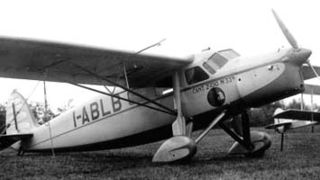 W
WThe CANT Z.1010 was a single engine, five seat Italian passenger aircraft flown in the mid-1930s. Only one was built.
 W
WThe twin-engined CANT Z.1011 was one of two bombers of about the same size and powered by the same engines, designed by Filippo Zappata in the mid-1930s. The other was the three-engined CANT Z.1007, which in the end was the type preferred by the Regia Aeronautica.
 W
WThe CANT Z.1012 was a small three-engined monoplane built in Italy in the late 1930s to carry either three or five passengers depending on the engines. A small number were built for Italian diplomatic use.
 W
WThe CRDA CANT Z.1018 Leone (Lion) was an Italian medium bomber of the 1940s.